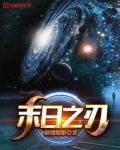Chapter 641 Starting Point
An Maidong and Hill were both extremely wary of the civilization that manufactured metal rectangles.
No civilization would create such a huge metal rectangle for no reason and then launch it into the universe.
Watching the supercomputer system constantly analyzing the patterns on the screen, An Maidong thought and muttered to himself: "What is their purpose?"
Hill has gone offline and is arranging related work at the Earth headquarters.
Vice-captain Hatoyama Yui was also thinking, but he was not thinking about the other party's purpose, but about how to crack these "QR codes".
Of course while they are thinking.
Another deputy captain, Robert, was already controlling the landing spacecraft to slowly land on the ice cap of the Courage Star.
The atmosphere of Courage is only 500 to 600 meters thick, and its atmospheric concentration is roughly equivalent to 0.027% of the Earth's surface.
Robert controlled the synchronized robot and appeared on the ice sheet with a group of survey team members. Then he began to use laser cutting equipment to melt the ice sheet and prepare to dig a passage.
The metal cuboid is 587 meters away from the surface of the ice sheet at its closest point.
These ice sheets cannot be entirely water ice, but also contain dry ice and methane ice, as well as a considerable amount of silicate components.
After laser cutting and dissolving, a channel with a diameter of 5 meters appeared in front of everyone. In order to prevent the re-condensation of methane, water and carbon dioxide after dissolution, the air and water pumps are running continuously.
The tunnel reinforcement machine on the other side also quickly pressed sections of pipes into the dissolved cave.
In less than five hours, the tunnel reached the vicinity of the metal rectangle. At this time, the closest point to the metal rectangle at the bottom of the tunnel was about 10 meters away.
Robert shouted in the built-in communication channel: "Stop, and use robots next."
"receive."
A professional excavator robot was sent to the bottom of the tunnel. This robot, which was similar to a tunnel boring machine, soon started to run with a clattering sound.
The scene was like shaved ice, with the billion-year-old ice at the bottom being shaved off layer by layer.
In less than half an hour, the 10-meter distance was opened.
The shield robot's cutting edge did not touch the metal rectangle, so it stopped working and was quickly pulled up.
Robert controlled the synchronous robot and went down the well himself.
He took an electric steel brush and brushed off the last few centimeters of ice bit by bit until a little metal slope was exposed under the searchlight. He then changed to a manual brush and gently swept the ice clean.
Even after being frozen for more than 80 million years, the slope of this metal rectangle still retains a bit of metallic luster. If he uses a wire grinder to polish it, he can probably polish it into a metal mirror surface.
But Robert is not so impolite. Working with these alien creations is very dangerous and requires a cautious heart.
The assistant came down with a device.
This is a contact mass spectrometer. The exposed part of the metal rectangle is about 3.2 square meters in area. The assistant puts something similar to a stethoscope against the surface of the metal rectangle.
Immediately, detailed elemental composition and composition ratio appeared on the display screen of the mass spectrometer.
"Dr. Qin Yu, what's the situation?" Robert asked curiously while secretly watching the surface of the metal rectangle.
Dr. Qin Yu, who was also busy with the synchronous robot, looked at the data: "This metal surface has been subjected to long-term impacts of cosmic rays and high-energy particles for about 128.27 million years..."
"This is similar to the detection data."
"There is a new discovery." Dr. Qin Yu said with some surprise.
"Oh? Any new discoveries?" Robert was a little curious.
Dr. Qin Yu conducted a layered analysis of the depth at which the surface of the metal cuboid was impacted by cosmic rays and high-energy particles. By substituting the cosmic ray intensity and high-energy particle density in interstellar space into the computational model, he was able to determine how far the metal cuboid had traveled.
Although this calculation model has certain errors, the error is definitely less than 100 light years.
Based on this calculation model, Dr. Qin Yu analyzed that this metal rectangle traveled a total of about 283,900 light years during 128.27 million years.
Robert was very shocked: "What? This thing traveled a distance of 280,000 light years?"
Qin Yu was also very surprised, but he continued to analyze it diligently: "This thing is most likely not from the Milky Way. After all, the radius of the Milky Way is less than 280,000 light years."
The metal rectangle is most likely flying by inertia, and there are no obvious signs of impact on it. This shows that the metal rectangle had not encountered any impact from an asteroid before colliding with the Courage Star. This also represents another situation, that is, the "trajectory" of the metal rectangle is very straight.
An Maidong and Hatoyama Yui, who were on the investigation space station, were also looking at the excavation site.
"Weiyi, what do you think?"
"First of all, we can rule out those from within the Milky Way. If it was launched from within the Milky Way, it would be impossible for the metal rectangle to fly a distance of 280,000 light years in over 100 million years under the gravitational pull of the stars along the way." Hatoyama Yui said as he pulled up a star map of the Milky Way.
Then, with the solar system as the center, draw a spherical range with a radius of 280,000 light years.
After calculating the light-year error, we quickly found a star system about 270,000 light-years away from the Orion spiral arm of the Milky Way.
An Maidong stared at the star map intently: "Did the metal cuboid fly over from this star system?"
"It is very likely. After all, this is the only star system in the vicinity of the Milky Way 280,000 light-years away from the Orion spiral arm. Of course, we cannot rule out the existence of rogue planetary systems and rogue planets ."
An Maidong fell into deep thought about this.
If the metal rectangle really flew over from the star system 270,000 light-years away, then it can only mean one thing: the civilization that created the metal rectangle encountered a very powerful enemy in that star system and could only place its last hope on this side of the Milky Way.
As to why it is not for exploring the Milky Way.
The reason is very simple. Although that star system is smaller than the Milky Way, it has a large number of stars. The other party is not even a level 2 civilization. It is likely that they have not even clearly detected the star system they are in, so how can they have the ability to launch a probe to the Milky Way?
If it is a wandering planetary system or a wandering planet wandering in the interstellar void, then the location of the civilization that manufactured the metal rectangle does not actually need to go to the Milky Way.
Because on the spherical boundary of 280,000 light years, there are many star systems that are closer than the Milky Way, so there is no need to seek far away.
Based on this information, An Maidong quickly determined the starting point of the metal rectangle as being on that star system.






